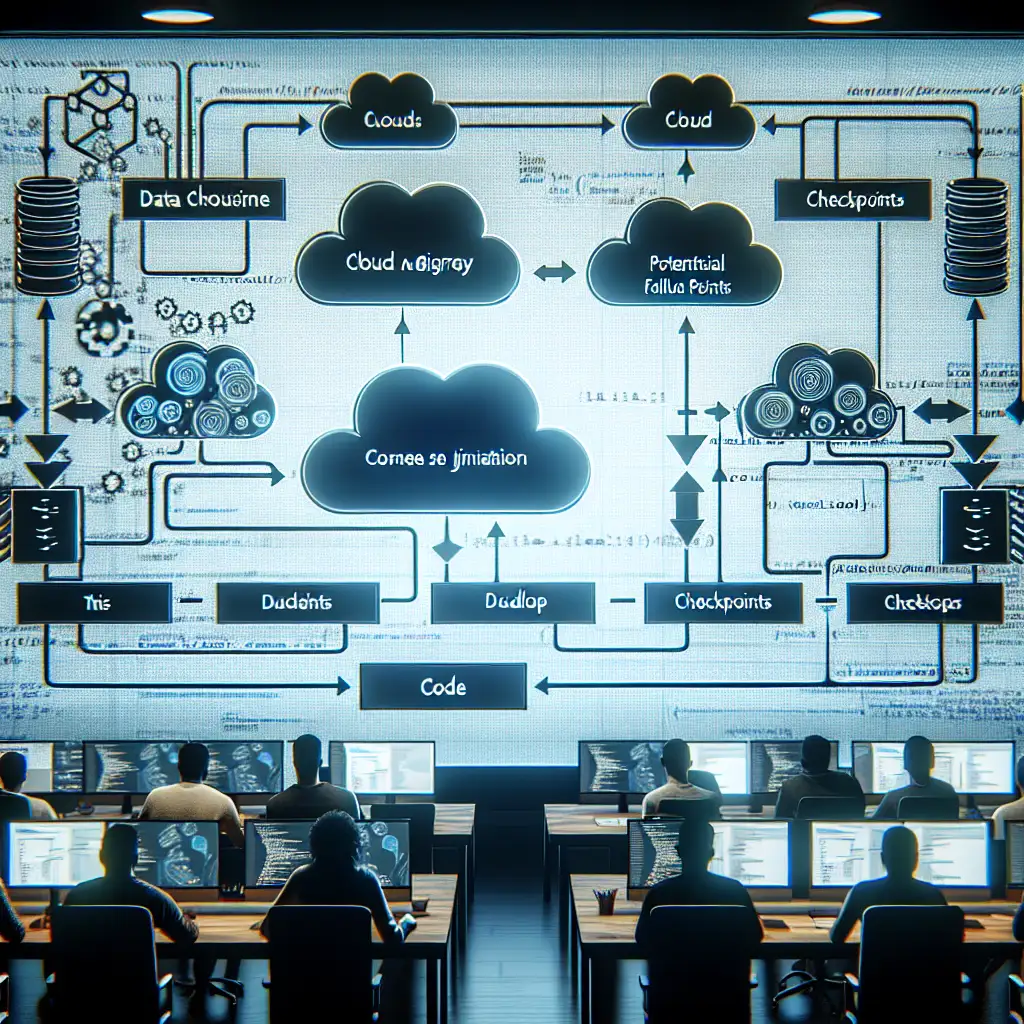Navigating the Pitfalls: A Practical Guide to Migrating from GCP to AWS with Minimal Downtime
Most migration guides focus on cloud-to-cloud moves in an ideal world. This post cuts through the theory and exposes the real-world challenges and critical steps you can’t afford to miss when moving from Google Cloud Platform (GCP) to Amazon Web Services (AWS). Many organizations are shifting their cloud strategies and need a clear, practical roadmap to migrate from GCP to AWS without disrupting operations or compromising data integrity. If you’re planning this transition, here’s a hands-on guide tailored for real-world success.
Why Migrate from GCP to AWS?
Before we dive in, it’s worth reflecting on why many organizations consider this move. AWS often offers:
- A broader range of services
- More mature enterprise support
- Global infrastructure with more regions and availability zones
- Competitive pricing models for certain workloads
Whatever your reasons—cost, capability, compliance—migrating clouds is a complex process that deserves careful planning.
Step 1: Inventory and Assess Your GCP Environment
Begin with a thorough understanding of what you have on GCP:
- List all resources: Compute Engine instances, Kubernetes clusters (GKE), Cloud Storage buckets, databases (Cloud SQL, BigQuery), IAM policies, networking setups, serverless functions, etc.
- Understand dependencies: Map out how these components interact.
- Check usage patterns: CPU, memory use, network traffic – critical for sizing AWS resources later.
Example:
If you run containerized apps on GKE with persistent disks and connect them to Cloud SQL instances, note the exact versions of Kubernetes you use, storage classes associated with your persistent volumes, network rules allowing traffic between components.
Step 2: Plan Your AWS Equivalent Setup
AWS counterparts can differ in subtle but important ways.
| GCP Service | AWS Equivalent |
|---|---|
| Compute Engine | EC2 |
| Google Kubernetes Engine (GKE) | Elastic Kubernetes Service (EKS) |
| Cloud Storage | S3 |
| Cloud SQL | RDS (MySQL/PostgreSQL/SQL Server) |
| BigQuery | Redshift or Athena |
| Cloud Functions | Lambda |
| VPC | VPC |
However, differences exist in configuration options or default behaviors (e.g., S3 buckets do not have exactly the same access controls as GCS buckets out-of-the-box).
Practical Tip: Use AWS Application Migration Service or tools like Terraform/CloudFormation combined with the GCP Deployment Manager templates for Infrastructure as Code portability.
Step 3: Prepare Data Migration Strategy – Handle Data Integrity and Consistency
Data migration is often where downtime risk is highest.
- For large datasets in Cloud Storage → S3: Use AWS DataSync or third-party tools like Rclone, which supports multi-threaded transfer with checksumming.
- For relational data in Cloud SQL → RDS:
- Use database replication tools such as AWS Database Migration Service (DMS) to perform continuous replication.
- Establish initial dumps with
pg_dump/mysqldumpif appropriate.
- For BigQuery data → Redshift/Athena:
- Export BigQuery tables as CSV/Parquet files into Google Cloud Storage.
- Transfer those files to S3.
- Load into Redshift using COPY commands or query directly via Athena.
Key Insight: Set up ongoing replication or change data capture (CDC) so your destination stays current while you test your applications in AWS.
Step 4: Networking and Security — Don’t Neglect IAM and Firewalls
Your security posture must be preserved:
- IAM roles/policies will not directly translate; recreate AWS IAM roles carefully.
- Audit service accounts used in GCP; replicate privileges with the principle of least privilege on AWS.
- Recreate firewall rules via Security Groups and NACLs in AWS VPC—remember inbound/outbound rules impact connectivity differently across providers.
Example:
If you have an app server on Compute Engine accessing a Cloud SQL instance over private IP with firewall rules allowing traffic on port 5432, create equivalent Security Groups that allow inbound PostgreSQL traffic only from your app server’s IP subnets within an AWS VPC.
Step 5: Testing Without Downtime — Run in Parallel
Before switching fully:
- Deploy your workloads on AWS using staging environments.
- Point test clients or users gradually through controlled DNS changes or load balancer settings.
- Validate performance under realistic load conditions.
Use feature flags if possible to toggle between cloud platforms during rollout.
Step 6: Cutover Planning — Minimize Downtime
A typical strategy might look like:
- Complete most data sync ahead of time via continuous replication methods like DMS for databases and DataSync for object stores.
- Schedule a short maintenance window during low usage periods:
- Stop writes on GCP environment temporarily.
- Sync final incremental changes.
- Redirect DNS / update application configurations to point at AWS endpoints.
- Monitor closely after cutover for anomalies or latency spikes.
Common Pitfalls and How to Avoid Them
Assuming Zero Differences Between Clouds
Clouds are not drop-in replacements; take time understanding specific service behaviors. For instance:
- S3 eventually consistent model vs. strongly consistent model of GCS could impact application logic expecting immediate consistency.
Underestimating Networking Complexities
Securing cross-cloud communication can be tricky; always double-check routing tables and firewall rules before testing connectivity.
Ignoring Cost Implications
Bandwidth transfer between clouds can be expensive—try compressing data before transfer or schedule transfers during off-peak times when pricing may be lower.
Forgetting Logging & Monitoring
Recreate monitoring alarms using AWS CloudWatch equivalent metrics; retain logs during transition periods for troubleshooting.
In Summary
Migrating from GCP to AWS is not just about lifting and shifting resources but navigating nuances across platforms carefully:
- Inventory everything accurately
- Map out service equivalents thoughtfully
- Design reliable data migration paths with continuous syncing
- Rebuild security controls faithfully
- Run parallel environments for solid testing
- Execute cutover meticulously minimizing downtime
With patience and preparation grounded in these practical steps, your migration can be smooth rather than disruptive—keeping your business humming through the transition.
If you're ready to start your migration journey or have specific questions about tools like DMS or DataSync configurations, let me know! I’m happy to share scripts or detailed deployment examples next time.
